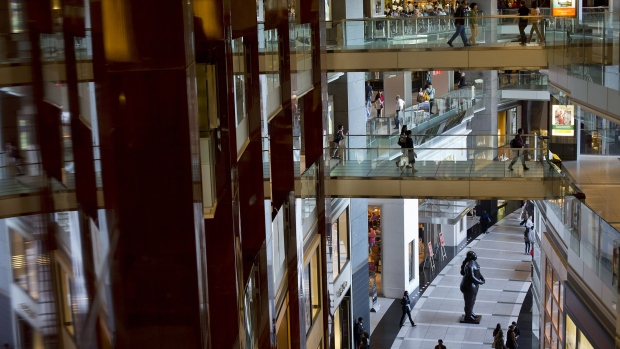Mar 12, 2019
U.S. core inflation unexpectedly cools on autos, drug prices
, Bloomberg News

A key measure of underlying U.S. inflation unexpectedly eased in February amid falling prices for autos and prescription drugs, giving the Federal Reserve more room to stick to its plan for being patient on raising interest rates.
Excluding food and energy, the so-called core consumer price index rose 0.1 per cent from the prior month and 2.1 per cent from a year earlier, according to a Labor Department report Tuesday. Those figures trailed the median estimates of economists. The broader CPI rose 0.2 per cent from January, the first increase in four months, though the 1.5 per cent annual gain missed projections and was the smallest rise since 2016.
The data suggest there’s a greater chance that inflation won’t hold up around the Fed’s 2 per cent objective, a development that could add to calls for policy makers to hold off on additional rate increases amid rising risks from weakening global growth.
Fed Chairman Jerome Powell made clear Friday that he and his colleagues are in no hurry to adjust interest rates as growth slows and inflation stays subdued. “With nothing in the outlook demanding an immediate policy response and particularly given muted inflation pressures, the committee has adopted a patient, wait-and-see approach,’’ he said in a speech in California.
Responding to questions, Powell said inflation in the U.S. is low, stable and doesn’t react much to slack in the economy. Policy makers will release updated quarterly projections for interest rates as well as inflation, growth and employment when they gather March 19-20.
Fed Target
The Fed has a 2 per cent target for a separate inflation gauge from the Commerce Department that's linked to consumer spending. That index tends to run slightly below the Labor Department's CPI, and January figures are due March 29.
The CPI report showed prices of new vehicles fell for the first time in four months while used-car prices dropped 0.7 per cent from January, the biggest drop since September.
Prescription-drug prices fell 1 per cent on a monthly basis, the most on record, bringing the annual decline to 1.2 per cent -- the largest drop since 1972.
Shelter costs, which account for about a third of CPI and mainly include housing expenses, continued to hold up, with the fourth straight monthly increase of 0.3 percent. Owners-equivalent rent, one of the categories designed to track rental prices, rose 0.3 per cent, as did rent of primary residence.
The slowdown in overall inflation is giving Americans more spending power. A separate Labor Department report on Wednesday showed that average hourly earnings, adjusted for inflation, rose 1.9 per cent in February from a year earlier. That compares with 1.6 per cent in the previous month and is the fastest pace since 2015.
Get More
- Economists had forecast a 0.2 per cent gain in the monthly core gauge and a 2.2 per cent annual advance.
- Apparel prices rose 0.3 per cent from the prior month as men's and boys' apparel had a record increase of 3.4 per cent, while women's apparel fell 1.6 per cent, the most in almost a year.
- Energy prices rose 0.4 per cent, the first increase in four months, as gasoline prices advance 1.5 per cent. Food costs gained 0.4 per cent, the biggest increase since 2014.
- Expenses for medical care fell 0.2 per cent, the biggest decline since 2013; these readings often vary from results for this category within the Fed’s preferred measure of inflation due to different methodologies.